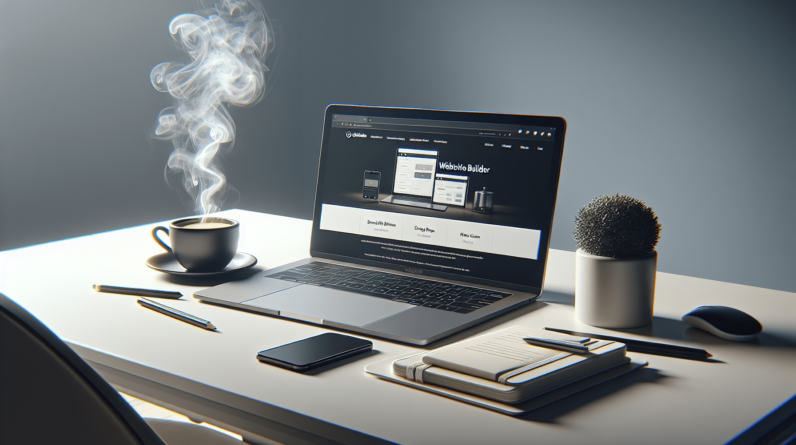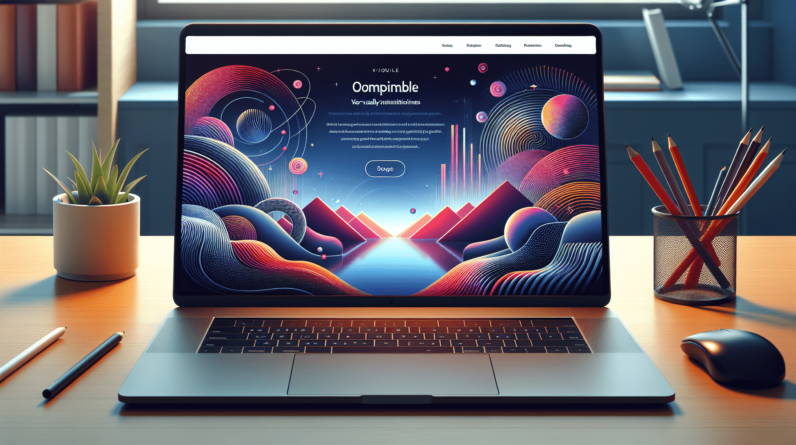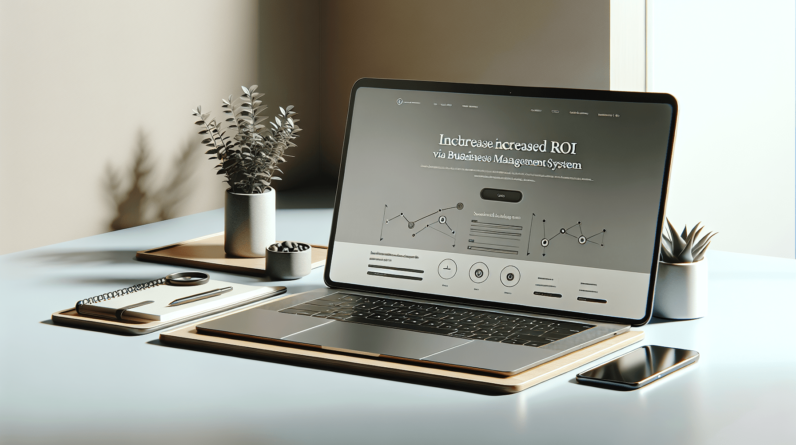Are you looking to add a touch of professionalism to your online business? Look no further! In this article, we will explore the importance of creating a professional favicon for your website. A favicon is a small icon that appears next to the website name in the browser tab. It may seem like a small detail, but it can make a big impact on your business’s overall image and credibility. We will guide you through the process of creating a professional favicon, using the systeme.io favicon as an example. Get ready to enhance your online presence and impress your visitors with a simple yet powerful favicon!
What is a Favicon?
A favicon is a small icon that represents a website or webpage. It is displayed in the browser tab, bookmark bar, and bookmarks list. Favicons are typically 16×16 pixels or 32×32 pixels in size and are saved as .ico files. They are a crucial element of your online business branding and can have a significant impact on your website’s aesthetics, recognition, and user experience.
Definition of a favicon
A favicon, short for favorite icon, is a small image or symbol that is associated with a specific website. It is a visual representation of a brand or business and helps users recognize and differentiate websites when they have multiple tabs open or are bookmarking pages. Favicons are often displayed on the left side of the browser tab, next to the page title.
Importance of a favicon
Having a professional favicon is important for several reasons. Firstly, it enhances your brand identity by visually representing your business or website. Secondly, it improves the aesthetics of your website by adding a visually appealing element. Thirdly, it increases recognition and recall as users can easily identify your website through the favicon. Fourthly, it boosts user experience by providing a visually appealing and cohesive browsing experience. Lastly, having a unique favicon differentiates your business from competitors and helps you stand out in a crowded online marketplace.
Why Do You Need a Professional Favicon?
A professional favicon is an essential element of your online business’s branding strategy. It not only enhances your brand identity but also contributes to the overall aesthetics and user experience of your website. Here are several reasons why you need a professional favicon:
Enhances brand identity
A professional favicon helps establish and reinforce your brand’s visual identity. It acts as a visual representation of your business and can evoke emotions and associations linked to your brand. By incorporating your brand’s colors, fonts, and symbols into the favicon, you create a cohesive and recognizable brand image across different touchpoints.
Improves website aesthetics
In addition to enhancing brand identity, a professional favicon adds a visually appealing element to your website. It helps create a cohesive and visually pleasing design, making your website more visually engaging for visitors. A well-designed favicon can contribute to the overall aesthetics and professionalism of your website, leaving a positive impression on users.
Increases recognition and recall
A strong and memorable favicon helps users easily recognize and recall your website. With multiple tabs open or when bookmarking pages, a clear and distinctive favicon makes it easier for users to identify and locate your website. It enhances the user experience by providing visual cues and streamlining navigation, increasing the likelihood of returning visitors.
Boosts user experience
A professional favicon contributes to a seamless and user-friendly browsing experience. It helps users differentiate between websites and find the one they’re looking for quickly. By providing a visual anchor for your website, it adds visual interest and makes it easier for users to identify and navigate to your site. This can also result in increased trust and credibility, as a well-designed favicon indicates attention to detail and professionalism.
Differentiates your business from competitors
In a competitive online landscape, a professional favicon sets your business apart from competitors. By creating a unique and visually striking favicon, you establish a distinctive visual presence that helps users remember and choose your website over others. It adds a touch of professionalism and uniqueness to your online business, making you stand out in a cluttered digital marketplace.
Designing Your Professional Favicon
Designing a professional favicon requires careful consideration of your brand, target audience, and scalability. Here are some key factors to keep in mind when designing your professional favicon:
Understand your brand
Before designing your favicon, it’s crucial to have a clear understanding of your brand identity. Consider your brand values, personality, and target audience. This will help you create a favicon that aligns with your brand and appeals to your target audience.
Keep it simple and visually appealing
A professional favicon should be simple and visually appealing. A cluttered or complex design may not be easily recognizable at smaller sizes and can be distracting. Focus on creating a clean and minimalist design that effectively conveys your brand identity and is visually appealing.
Consider your target audience
When designing your favicon, consider your target audience’s preferences and expectations. Think about the colors, symbols, and imagery that resonate with your target audience and reflect your brand values. This will help you create a favicon that appeals to your specific audience and enhances their overall experience.
Use relevant symbols or initials
Incorporating symbols or initials related to your brand or business can make your favicon more meaningful and recognizable. Choose symbols or initials that are easily associated with your brand and reflect its essence. Avoid generic or overused symbols to maintain uniqueness and stand out from competitors.
Ensure scalability and visibility
It’s essential that your favicon remains visible and recognizable at different sizes. Test your design at smaller resolutions to ensure that it still maintains its integrity and is easily identifiable. A favicon that is too detailed or complex may become pixelated or lose its visual impact when scaled down, so it’s important to strike a balance between simplicity and visibility.
Choosing the Right Colors
The colors used in your favicon play a significant role in conveying your brand identity and influencing user perception. Here are some key considerations when choosing colors for your favicon:
Reflect your brand identity
The colors used in your favicon should be consistent with your overall brand identity. Consider your brand’s color palette and choose colors that align with your brand values, personality, and target audience. Consistency of color helps reinforce your brand image and creates a cohesive visual experience for users.
Consider color psychology
Colors have the power to evoke specific emotions and associations. Understanding color psychology can help you choose colors that align with your brand messaging and resonate with your target audience. For example, blue is often associated with trust and reliability, while red can signify energy and passion. Consider the emotions and associations you want to convey, and choose colors accordingly.
Ensure contrast and visibility
To ensure your favicon is easily recognizable and visible, it’s important to consider contrast. Choose colors with sufficient contrast so that your favicon stands out against various backgrounds, including browser tabs and bookmarks. High contrast colors will enhance visibility and ensure that your favicon is easily identifiable.
Common Mistakes to Avoid
When creating a professional favicon, it’s important to avoid common mistakes that can diminish its effectiveness. Here are some mistakes to avoid:
Using low-quality images or logos
Using low-quality images or logos can result in a favicon that appears pixelated or blurry. It’s important to use high-resolution images or logos when designing your favicon to ensure clarity and visual impact. Low-quality favicons can diminish the overall professionalism and credibility of your website.
Including too much detail
A favicon’s small size means that intricate or complex details may not be visible or easily recognizable. Avoid including too much detail in your favicon design as it can become cluttered or indistinguishable at smaller sizes. A minimalist and streamlined design is more effective in conveying your brand identity and ensuring visibility.
Ignoring scalability
While designing your favicon, it’s crucial to consider scalability. A favicon should remain visually appealing and recognizable at different sizes. Test your design at smaller resolutions to ensure that it maintains its integrity and is easily identifiable. Neglecting scalability can result in a favicon that loses its visual impact when scaled down.
Using generic or overused symbols
In order to create a unique brand identity, it’s important to avoid generic or overused symbols in your favicon. Using symbols that are commonly associated with certain industries or businesses can result in a lack of distinction and make your favicon blend in with competitors. Aim for a favicon that is unique to your brand and stands out in a crowded online marketplace.
Tools and Resources for Creating Favicons
Creating a professional favicon doesn’t have to be a complex or daunting task. There are several tools and resources available that can help simplify the process. Here are some popular options:
Adobe Photoshop
Adobe Photoshop is a powerful graphic design software that allows you to create and edit images, including favicons. With its extensive features and capabilities, Photoshop provides you with the flexibility to design a favicon that aligns with your brand identity. Its layers and effects functionality enables you to create visually appealing and professional favicons.
Canva
Canva is a user-friendly online design tool that offers a range of templates and design elements for various purposes, including favicon creation. With Canva, you can easily create a visually appealing favicon by selecting from a wide array of pre-designed elements, fonts, and colors. It’s a great option for those who want to create a favicon quickly and without much design experience.
Favicon.io
Favicon.io is an online service that allows you to convert any image into a favicon quickly and easily. It provides a simple and intuitive interface where you can upload your image and choose the desired favicon size and format. Favicon.io also offers a collection of icons and symbols that you can use to create a favicon if you don’t have an existing image.
Favicon & App Icon Generator
Favicon & App Icon Generator is a web-based tool that enables you to generate favicons and app icons in various sizes and formats. Simply upload your image or logo, select the desired dimensions, and the tool will generate a favicon package that includes all the necessary files. It’s a convenient option for generating favicons that are compatible with different browsers and devices.
Online logo makers
If you don’t have access to graphic design software or prefer a simpler solution, online logo makers can come in handy. Websites like DesignEvo, LogoMakr, and Wix Logo Maker offer user-friendly interfaces and pre-designed logo templates that can be customized for favicon creation. These tools are beginner-friendly and can help you create a professional favicon without the need for specialized design skills.
Adding Your Favicon to Your Website
Once you have designed your professional favicon, it’s time to add it to your website. Here’s a step-by-step guide on how to add your favicon to your website’s root directory:
Exporting your favicon in the correct format
Before uploading your favicon, ensure that it is saved in the correct format. Favicons are typically saved as .ico files, but some browsers also support .png or .svg formats. Export your favicon in the appropriate format based on the browser compatibility and your website’s requirements.
Uploading your favicon to your website’s root directory
Connect to your website’s server using an FTP client or access your website’s file manager through your hosting provider’s control panel. Navigate to the root directory of your website where your homepage is located. Upload your favicon file to this directory. If your website already has a favicon, you may need to replace the existing file with your new one.
Adding favicon code to your website’s HTML code
To ensure that your favicon is displayed correctly, you need to add code to your website’s HTML file. Open the HTML file of your website’s homepage using a text editor, such as Notepad. Within the head section of the HTML code, add the following line:
Replace “your-favicon-file.ico” with the file name and extension of your favicon. Save the changes and upload the modified HTML file back to your website’s server.
Testing and Optimizing Your Favicon
After adding your favicon to your website, it’s important to test and optimize it to ensure optimal performance. Here are some key steps to follow:
Ensuring compatibility across browsers and devices
Different browsers and devices may handle favicons differently, so it’s important to test your favicon on various platforms. Check how your favicon appears on popular browsers like Google Chrome, Mozilla Firefox, and Safari, as well as on different operating systems and devices. Ensure that it displays correctly and remains visually appealing on all platforms.
Checking for visibility and recognizability at different sizes
Test your favicon at various sizes to ensure visibility and recognizability. Open your website on different devices with varying screen sizes, including smartphones, tablets, and desktops. Check that your favicon maintains its visual impact and is easily distinguishable, even at smaller sizes.
Monitoring website performance with the favicon
Keep an eye on your website’s performance after adding the favicon. Monitor page load times and overall website performance to ensure that the addition of the favicon does not negatively impact the user experience. If you notice any issues, such as increased load times or decreased website performance, you may need to optimize your favicon or seek professional assistance.
Updating Your Favicon
While a professional favicon can have a long lifespan, there are instances when updating it is necessary. Here are some considerations for updating your favicon:
When to update your favicon
Consider updating your favicon if there are significant changes to your brand’s visual identity, such as a logo redesign or rebranding. Updating your favicon ensures consistency with your updated branding and helps maintain a cohesive visual experience for users. Additionally, if your current favicon is not visually appealing or does not accurately represent your brand, it may be time for an update.
Maintaining consistency with branding updates
When updating your favicon, it’s important to maintain consistency with any recent branding updates. Ensure that your new favicon aligns with your updated logo, colors, and overall visual identity. Consistency in branding across all touchpoints, including your favicon, contributes to increased recognition and reinforces your brand image.
Conclusion
In conclusion, a professional favicon is a crucial element of your online business’s branding strategy. It enhances your brand identity, improves website aesthetics, increases recognition and recall, boosts user experience, and differentiates your business from competitors. When designing your professional favicon, consider your brand, target audience, and scalability. Choose colors that reflect your brand identity and ensure contrast and visibility. Avoid common mistakes and use tools and resources to simplify the favicon creation process. Add your favicon to your website’s root directory and test and optimize it for compatibility, visibility, and website performance. If necessary, update your favicon to maintain consistency with branding updates. By creating and implementing a professional favicon, you can enhance your online business’s visual identity and provide a memorable and cohesive experience for your website visitors.







